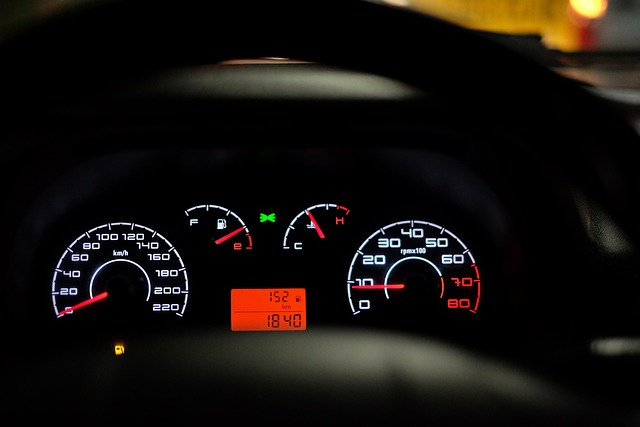Looking to register your car in California? This comprehensive guide walks you through every step, from understanding key requirements to completing the process efficiently. We delve into essential documents needed, the significance of VIN verification (a crucial process involving your vehicle’s unique identifier), and approved registration locations across the state. By following these tips, streamline the process and hit the roads legally in no time.
- Understand California Vehicle Registration Requirements
- Gather Necessary Documents for Car Registration
- Perform VIN Verification: Steps & Importance
- Choose an Approved Registration Location in CA
- Complete the Registration Process: Tips & Tricks
Understand California Vehicle Registration Requirements

Before diving into the registration process, it’s crucial to understand California’s vehicle registration requirements. These rules are designed to ensure road safety and facilitate smooth traffic flow. One key aspect is the verification of a Vehicle Identification Number (VIN). This unique 17-character code serves as a fingerprint for your car and must be accurately documented during registration.
In California, a mobile VIN inspection or mobile VIN verification service can be particularly useful. These services provide convenient and efficient ways to check and record your vehicle’s VIN, ensuring compliance with state standards. With a simple process that often involves having a trained professional visit you, these mobile vin verifier options make it hassle-free to meet registration mandates.
Gather Necessary Documents for Car Registration

Before you start the registration process, ensure you have all the essential documents for car registration in California. The key document is the Vehicle Identification Number (VIN) verification. This unique 17-character code is your vehicle’s fingerprint and can be found on the vehicle’s certificate of title or in its manual. A mobile VIN inspection or using a mobile vin verifier app can help you quickly and easily gather this critical information.
Along with the VIN, you’ll need proof of ownership, typically through a signed title document. If the car is not fully paid off, you might need to include a lienholder’s statement from your lender. Additionally, valid identification like a driver’s license or state-issued ID card will be required for registration. Make sure all documents are up-to-date and meet California’s specific requirements to streamline the registration process.
Perform VIN Verification: Steps & Importance

Before registering your car in California, it’s crucial to perform a Vehicle Identification Number (VIN) verification. This process involves checking the vehicle’s unique VIN to ensure its authenticity and history. You can do this through a mobile vin verifier or by visiting a designated inspection center. During the vin inspection, they’ll cross-reference the VIN with various databases to gather important information such as previous ownership, accident history, outstanding loans, and recall notices. This step is essential as it helps protect you from buying a car with hidden issues or a shady history.
The mobile vin verification process is straightforward. You simply provide your VIN to a professional who will use specialized equipment and software to pull up detailed data about the vehicle. This method saves time, is often more convenient, and can give you peace of mind when purchasing a used car. By ensuring the VIN is valid and matches the vehicle’s physical condition, you’re taking a significant step in making sure your registration process goes smoothly and that you own a safe, legally sound vehicle.
Choose an Approved Registration Location in CA

When registering your car in California, it’s essential to choose an approved registration location. The state offers various options, including DMV field offices and certain third-party service centers. Make sure the location you select is authorized by the California Department of Motor Vehicles (DMV) to handle vehicle registration and title transactions. This ensures a smooth process and prevents potential issues down the line.
One crucial step in the registration process is the VIN verification, which can often be completed at these approved locations. Some even provide mobile VIN inspection services, allowing you added convenience. A valid and accurate VIN (Vehicle Identification Number) inspection is essential for ensuring that your vehicle matches its listed specifications and history, thus maintaining the integrity of California’s record-keeping system.
Complete the Registration Process: Tips & Tricks

Completing the registration process for your car in California involves several steps, and one crucial aspect is ensuring accurate and legitimate documentation. Begin by gathering all necessary papers, including your vehicle’s registration form, proof of insurance, and identification documents. It’s essential to verify the Vehicle Identification Number (VIN) as part of this process, which can be done through a mobile VIN verification service or a traditional VIN inspection.
Utilizing a mobile VIN verifier can streamline this step; these services allow you to check your car’s history remotely, ensuring that there are no outstanding issues or discrepancies. By completing the registration with meticulous attention to detail and utilizing available tools like mobile VIN verification, you can ensure a smooth process and maintain compliance with California’s regulations.
Registering a car in California involves understanding state requirements, gathering essential documents, and completing a straightforward process. Remember to perform a VIN (Vehicle Identification Number) verification, which is crucial for ensuring vehicle authenticity. Choose an approved registration location, whether it’s the DMV or a third-party service, to streamline the experience. By following these steps and tips, you’ll efficiently navigate the car registration process in California.
